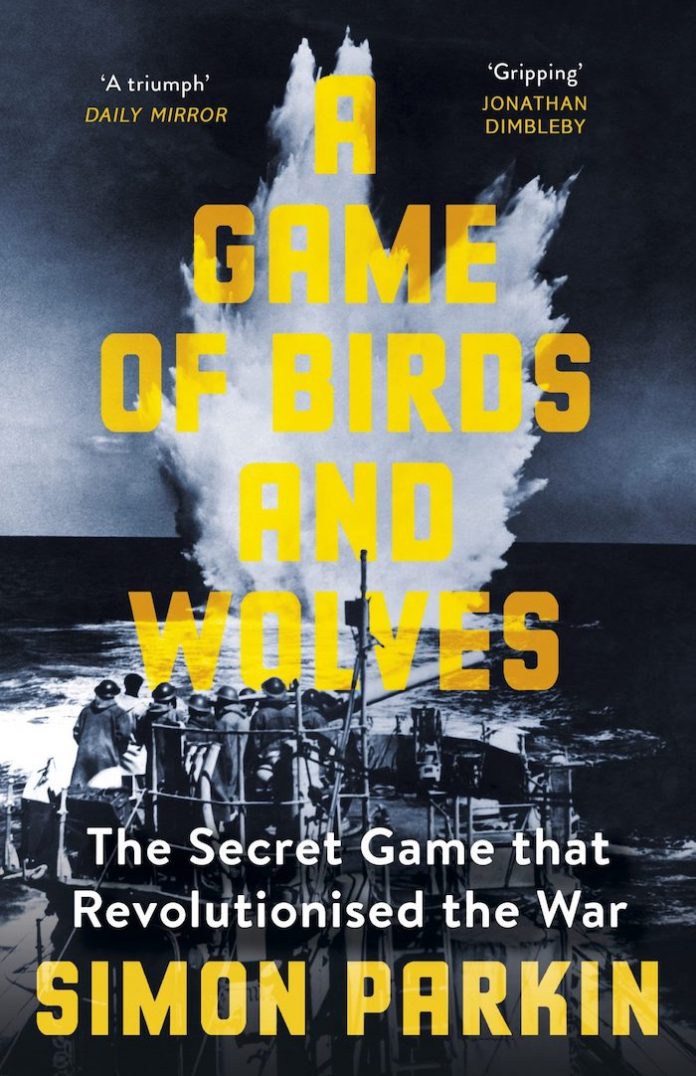
A Game of Birds and Wolves: the Secret Game that Won the War. By Simon Parkin. Published by Hodder & Stoughton. ISBN: 978 1 529 35303 7
Reviewed by: ‘Fighting Sailor’
The U-boat campaign in the North Atlantic is in full swing and Doenitz is convinced that he can starve the British into surrender. From the Allies’ perspective, he is dangerously close to being right. Commander Gilbert Roberts (promoted to Captain during the War) is the man who, the author argues, changes the course of the war.
‘Invalided’ out of the Navy shortly before the war owing to the chronic effects of tuberculosis, Roberts was recalled to Service having previously (and relevantly) served at the Tactical School in Portsmouth running war games. It was this expertise that was called upon to use gameplay to develop the tactics, and train the seagoing commanders, to beat the U-boats in the Atlantic.
In the first few chapters of the book Parkin seeks to bring to life the context in which Roberts’s activities took place. There are evocative accounts of the U-boat war at sea from the perspectives of participants on both sides of the periscope: the U-boat aces and their crews, their victims and adversaries. There is little new added here for those familiar with DasBoot and The Cruel Sea (both of which are referenced) and, being critical, some of these accounts feel like they were told simply because they were the ones for which records existed and could thus be recounted. Nonetheless, the accounts and backstories of the protagonists add colour and pathos to a story that could otherwise be a dry tale of naval tactical development and training. In particular, the personal stories of the Wrens, some of whom were U-boat victims on passage to Gibraltar when the SS Aguila was sunk, are a helpful segue into the founding of the Women’s Royal Naval Service and its wartime role. A theme of the book is the struggle for women (and indeed Roberts himself given his physical frailties) to be given the opportunities to prove themselves and meaningfully contribute. Parkin gives some fine examples of where the elitism and discrimination is overcome by necessity, and prejudice melts away in the face of overwhelming evidence of the value of the work being done.
‘The Game’ itself is a cleverly designed ‘tactical floor’ where players are given fields of view that limit their situational awareness to that analogous to those of the Units that they are playing. Moves are made in turns by the passing of chits to the game operators and the tactical situation played out. The stark conclusion is that “commander’s instinct” cannot be relied upon. Despite some initial success, Captain “Johnnie” Walker’s tactics were found to be flawed and better alternatives developed based on playing ‘The Game’. The principal new tactic was known as ‘Raspberry’, although variants were also developed, and much of the legwork in its statistical underpinnings was conducted by WRNS Officer Jean Laidlaw. That detailed and rigorous analysis, based on intelligence and after-action reports, and confirmed by simulation in a synthetic environment can provide better tactics and training than the intuition of practitioners; however brave, charismatic and tenacious, is something we should bear in mind for the present too – especially with a potentially transformational Integrated Review upon us.
The apogee of the book is ‘The Battle of Birds and Wolves’ where the convoy ONS.5 and its escorts, employing the tactics developed by Roberts and his team of Wrens, battle 30 U-Boats arrayed in wolfpacks (each with a German code name of a species of bird): “Both Doenitz and Horton [Admiral Sir Max Horton, by then CinC Western Approaches], meanwhile, recognised the decisive quality of what had happened. Both men separately suggested that the battle for ONS.5 was a pivotal moment in the war against the U-boats.”
The book is engaging, moves along at good pace and brings to life, from limited source material, an important and largely hitherto unrecognised contribution to the Allied victory in the Second World War. Furthermore, it is a stark reminder that the answers to some of the most important questions in warfare may reside in those outside of the norms of “the system”. Ensuring that the very most is made of the talent available, in whatever form it comes, can be the key to competitive advantage and, ultimately therefore, the difference between victory and defeat.
This review by courtesy of ‘Naval Review’ (UK)



